The hunt for Namahage on the Oga Peninsula
by Raina, staff writer of japan-guide.com
| previous post |
| next post |
2016/03/08 - The hunt for Namahage on the Oga Peninsula
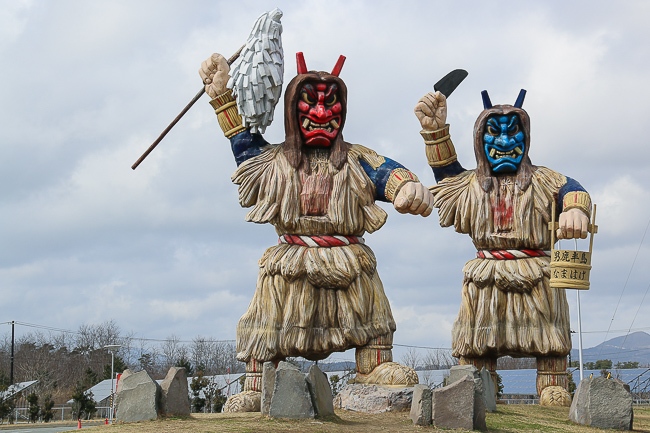
Common associations with Akita Prefecture include the Akita-inu breed of dogs, Akita beauties (Akita bijin) and rice (Akita Komachi). However a lesser known attraction but equally famous across Akita Prefecture are the Namahage - gods (or some think of them as messengers of the mountain god) who make sure that there are no idle people living in the community and everyone's doing their job - on the Oga Peninsula.
For this trip, I had help from the Akita Prefecture Tourism Support Center at the prefectural building in Akita City, located a short bus ride from the west side of Akita Station. The support center has just newly opened with English speaking staff on hand and also offers a dedicated English telephone line for any queries by foreign tourists.
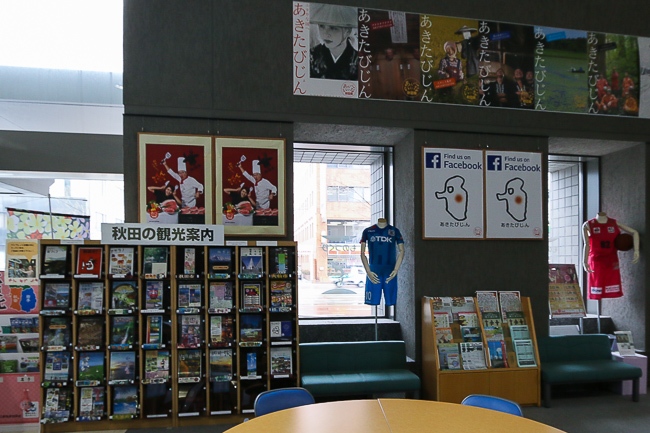
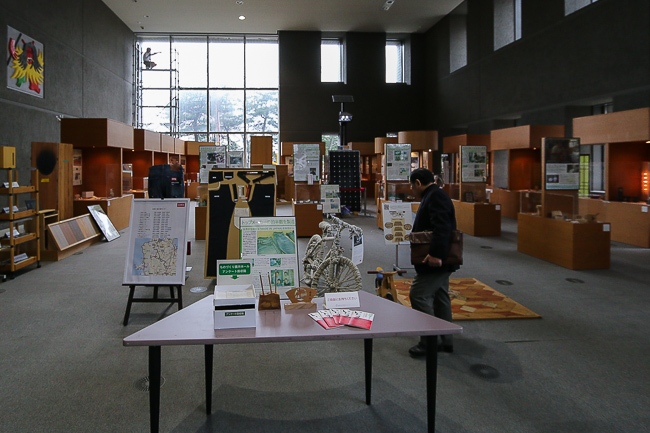
I went to the tourism support center to see what I could do that was off the beaten track not far from Akita City, and gathered more information about the Oga Peninsula including recommendations for sightseeing spots. The peninsula is about an hour's drive from the city and is best accessed by rental car. Its proximity made it a very doable day trip and offers an insight into namahage, part of the area's cultural heritage as well as coastal views. The JR Oga-Namahage Line provides train access to the peninsula, and there is a tourist information center at the station too. However, buses from the station to the attractions are far and few. There is a new sightseeing taxi program that brings visitors from one spot to the other, but that requires advance reservations which can only be done in Japanese for now.
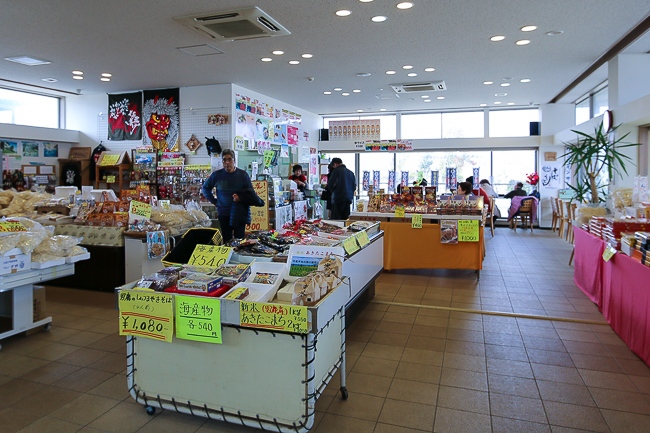
Before I started on my one day exploration of Oga Peninsula, I headed for lunch to power up, and there's no better lunch options than some local delicacies. I tried both the hatahata-don and shotsuru yakisoba at a popular local eatery not far from Oga Station. They were both tasty and came across to me as local interpretations of Japanese dishes using local ingredients.
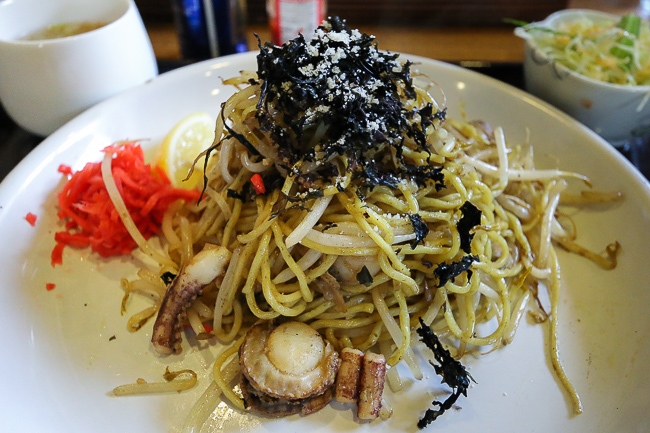
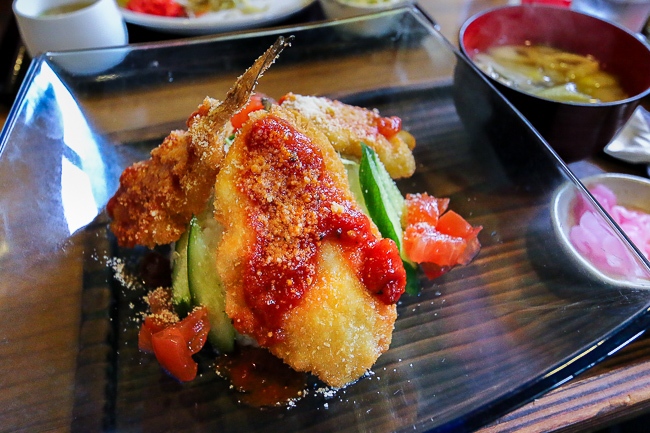
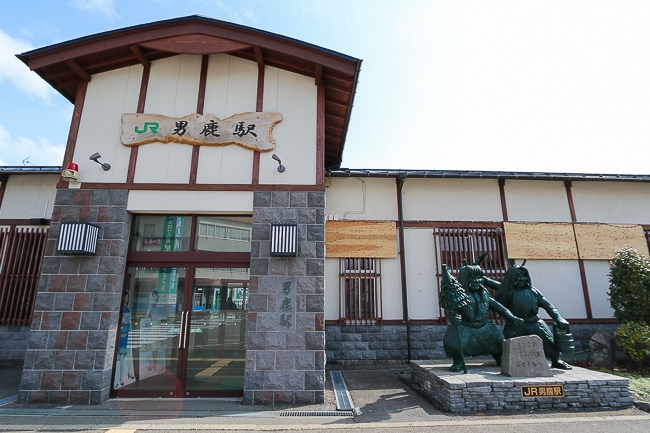
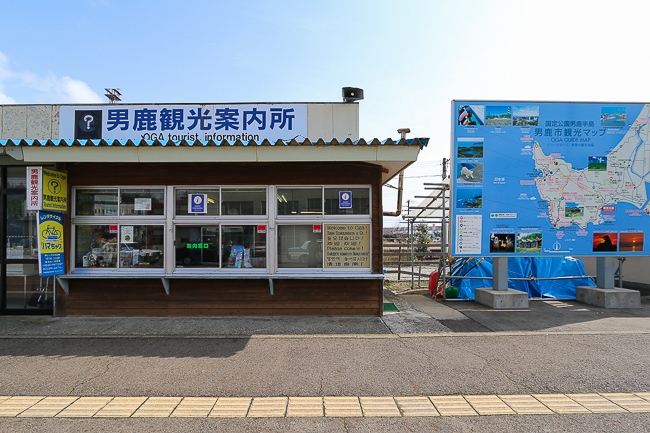
The main attraction on the peninsula has to be the Namahage Museum which explains what namahage are and showcases the different masks used. It is recommended to watch the video explaining the role of Namahage (English and Chinese audio guides are available), before continuing on to the main exhibition. The main gallery contains about 80 original Namahage masks from 60 districts on the Oga Peninsula, including some really old ones from the Edo Period. No two masks are the same, and designs vary depending on the district.
Namahage are said to descend upon the villages on December 31 and hunt for lazy children. Back in the day, the telltale sign of a lazy person was the blisters on the back of their hands from sitting in front of the open fire for too long. The Namahage would abduct these lazy people and cut the blistered skin off with the weapons they carry. Families offer the Namahage sake and food to appease them as well as thank them for the past year, and children promise to be hardworking in the new year. It is said that the Namahage also bring good fortune and that it is time to celebrate the new year when they leave. Single, unmarried men are chosen to play the role of Namahage.
Visitors can see re-enactments of a typical Namahage visit to a home on the Oga Peninsula at the adjacent Oga Shinzan Folklore Museum. It is not surprising to have frightened and crying children when the Namahage appear during the performance! Note that while performances are held everyday from April to November, they are held only on the weekends from December to March.
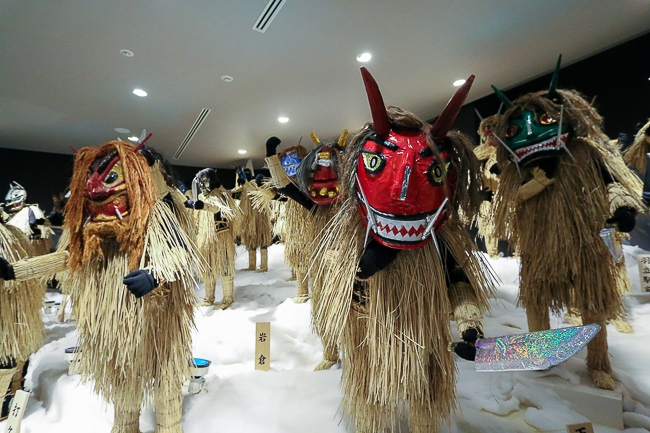
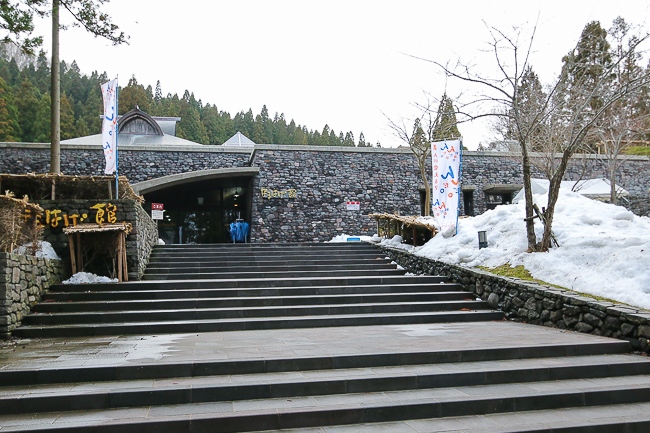
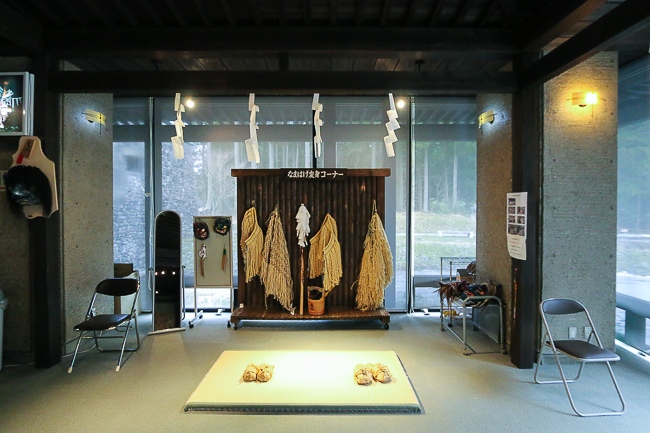
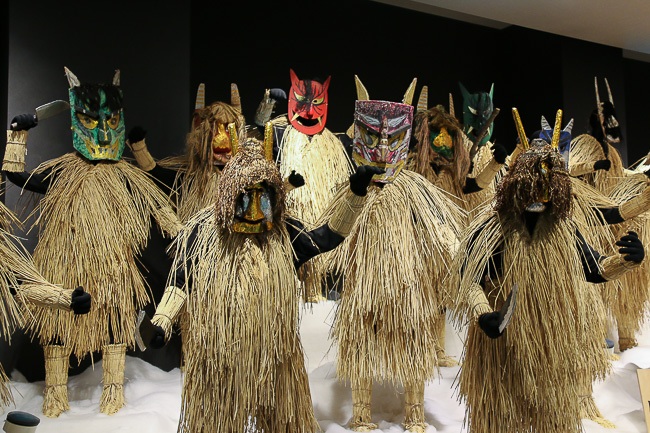
Not far from the Namahage Museum are over 10,000 cedar statues of Buddha housed in a small temple. The carvings cover the walls of the building halfway up to the ceiling. Some of the sculptures also have facial features, making it a little eerie.
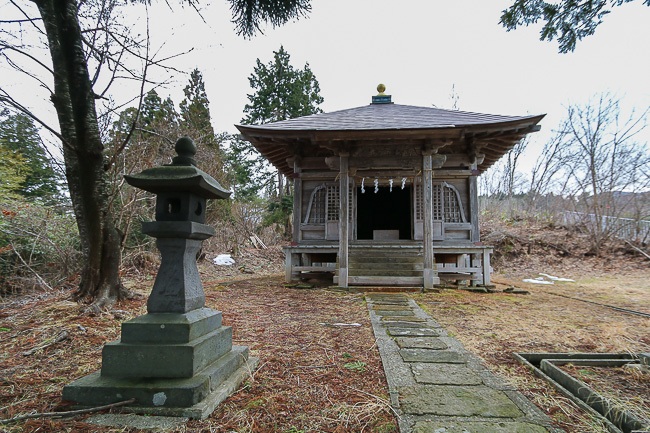
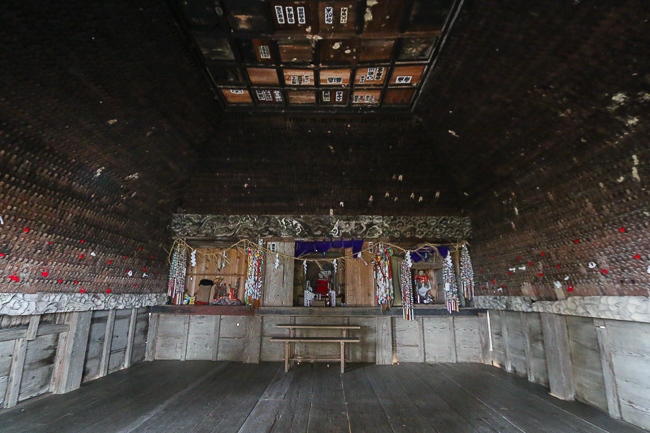
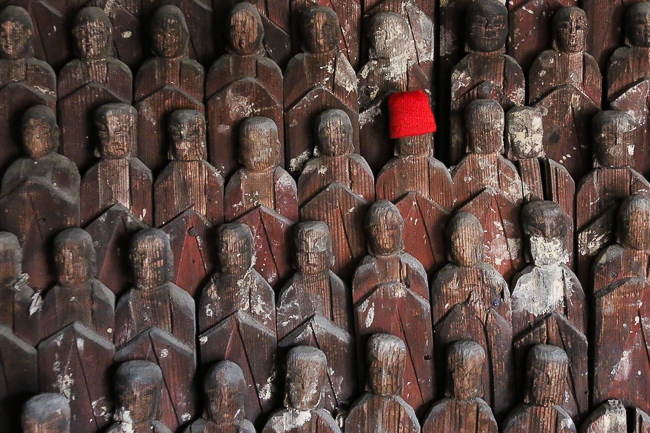
My next stop after learning about Namahage was the Nyudo Lighthouse located at the northern tip of the peninsula. Its location is 40 degrees north of the equator, and there are stones marking the 40th parallel north latitude. There are restaurants and souvenir shops at the car park area, and I can imagine it to be bustling with activity when the weather gets warmer.
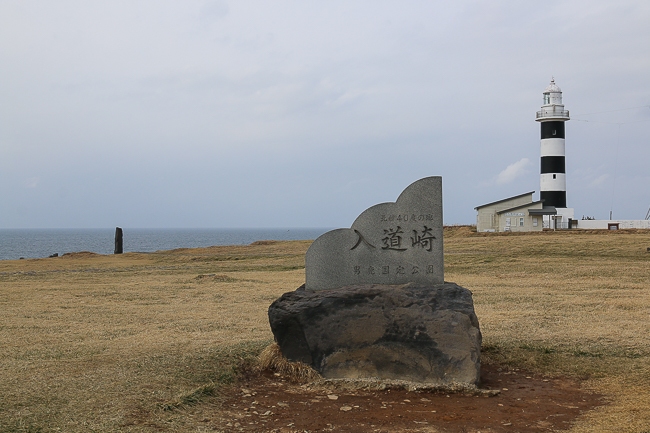
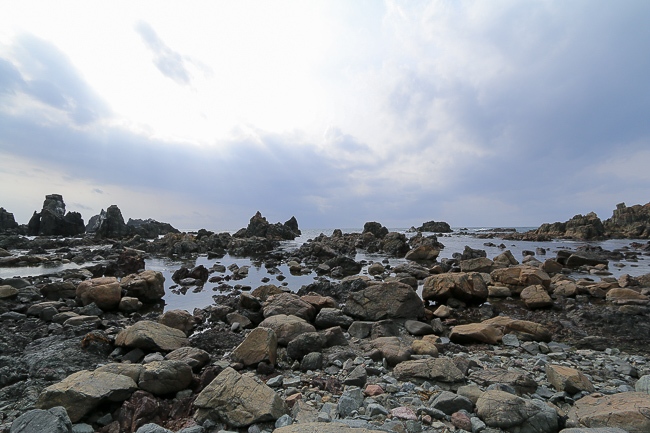
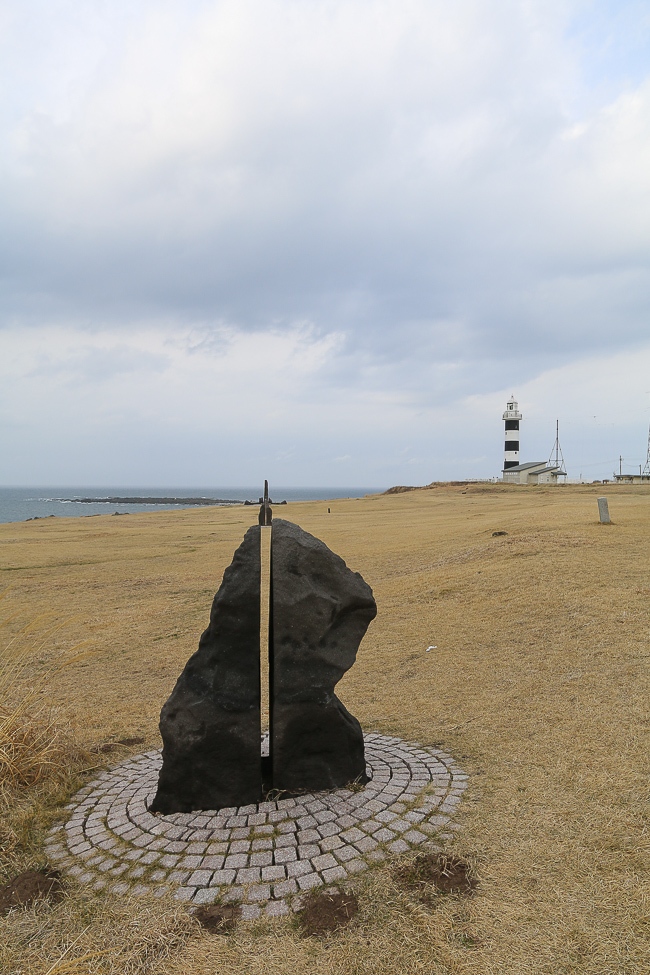
There are two main roads in Oga Peninsula that connect almost all of the sightseeing spots: the mountain line and the coastal line. The coastal line is the more scenic route, while the mountain line is the faster one. I got on the coastal route from Nyudo Lighthouse and enjoyed the view of the rugged coastline and of the horizon beyond. It would've been perfect if it were sunny day with blue skies and if I were driving a convertible. But that will remain a dream until the day I hit the jackpot.
Midway through the coastal drive, I stopped at Hachibodai, a lookout point that offers views of the interior lakes that were created by volcanic activity, and of Toga Bay. Despite the late winter brown shrubbery around me, I may or may not (okay I did) have let out an inadvertent "woaahhh" when I caught a glimpse of one of the two lakes on the way to the lookout.
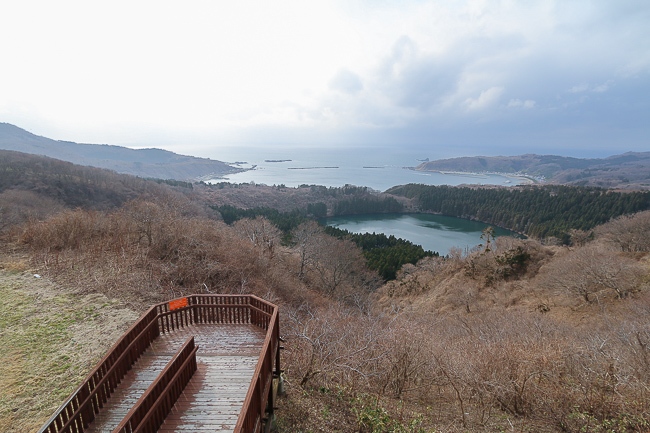
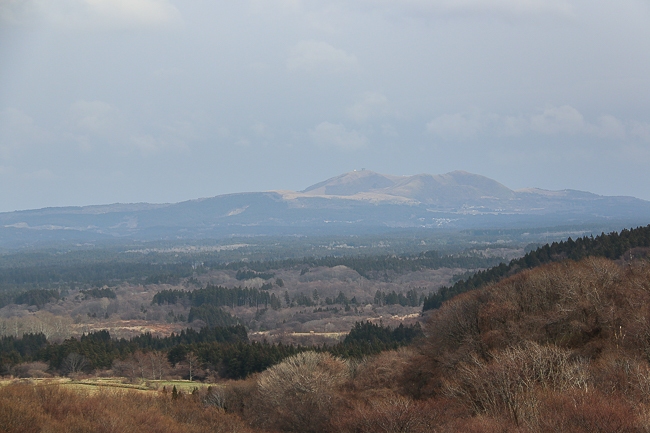
After admiring the scenery, I made my way to Goshado, a row of five shrines in the mountain that can only be reached by climbing 999 steps, which was about a 15-minute walk uphill from the carpark. The five shrines had their beginnings in 860, but the buildings we can see today were built over 300 years ago in the Edo Period.
Legend has it that a Han Emperor brought five ogres with him to the village. In the first month of each new year, the ogres were free to roam and terrorized the villagers, stealing their harvest and women. In an attempt to stop the harassment, the villagers challenged the ogres to build a staircase of a 1000 steps to the shrines by sunrise in exchange for a wife each. If they were unable to complete the task, the ogres had to leave and not harass the village again. Spurred by the reward, the ogres got to work quickly and were faster than the villagers imagined. Just before the ogres could lay the 1000th step, a villager mimicked the cry of a rooster and tricked the ogres into believing it was sunrise and that they had lost the challenge. They left in humiliation and never bothered the village again.
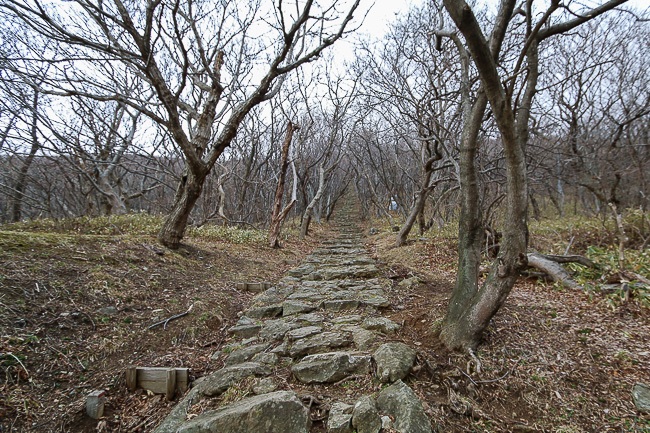
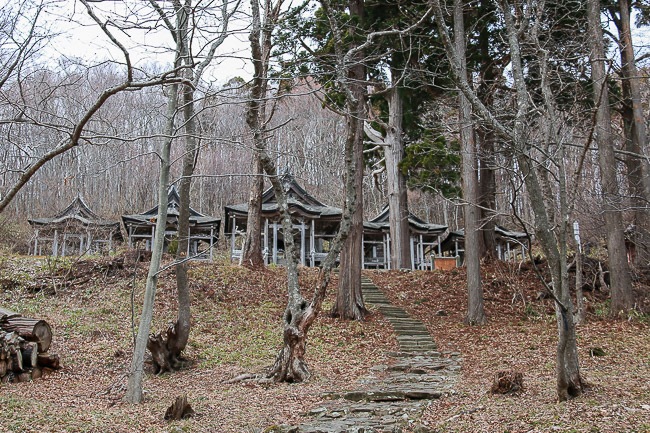
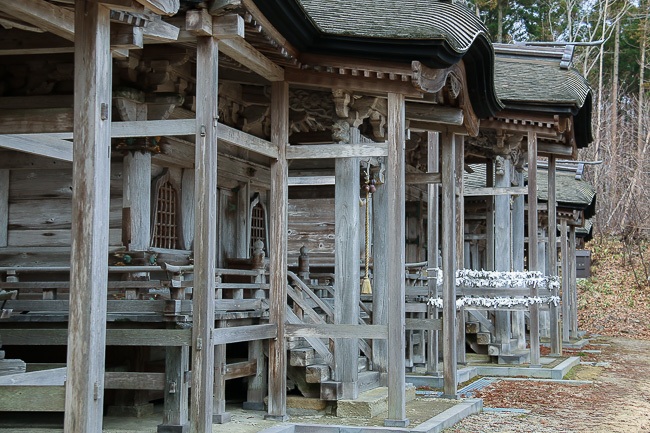

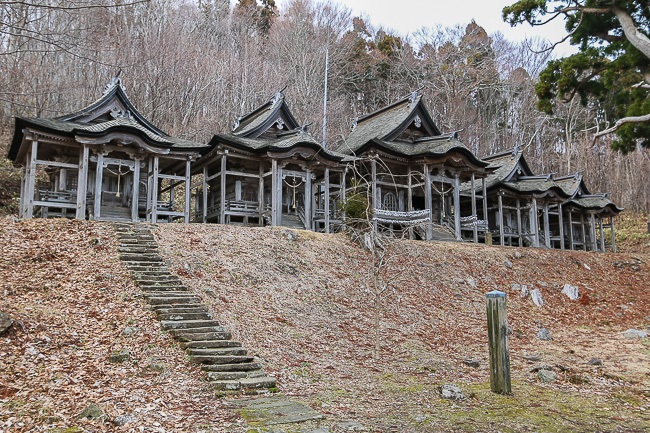
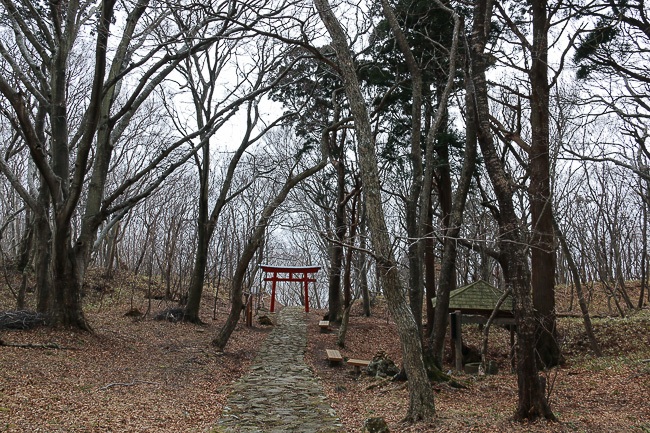
My last stop for the day was a geological attraction, nicknamed the Godzilla rock, at the southern end of the peninsula. Sunset is the best time to see the rock when the sky is lit by fiery orange rays and to understand the origins of its name. Even though it wasn't sunset when I was there, I still had fun climbing over the rocks. I even spied what I think was a sleeping dragon's tail!
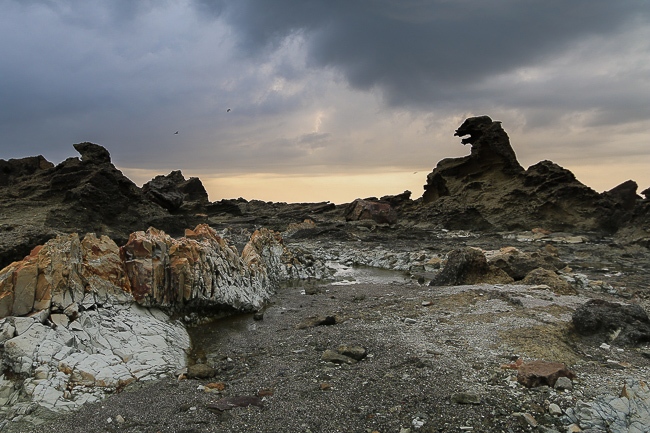
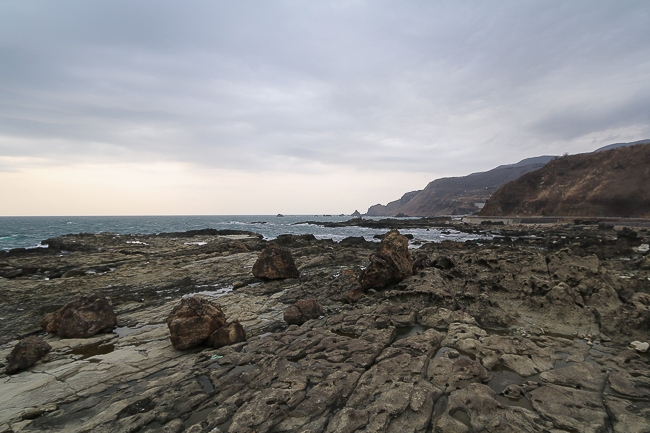
From there, it was time to bid farewell to the Oga Peninsula. I was thankful to not have encountered any wild Namahage but we'll see what happens when December 31 rolls around this year. Hopefully the Namahage will find my behaviour satisfactory, and I won't find myself in tears pleading and promising to be hardworking the following year.
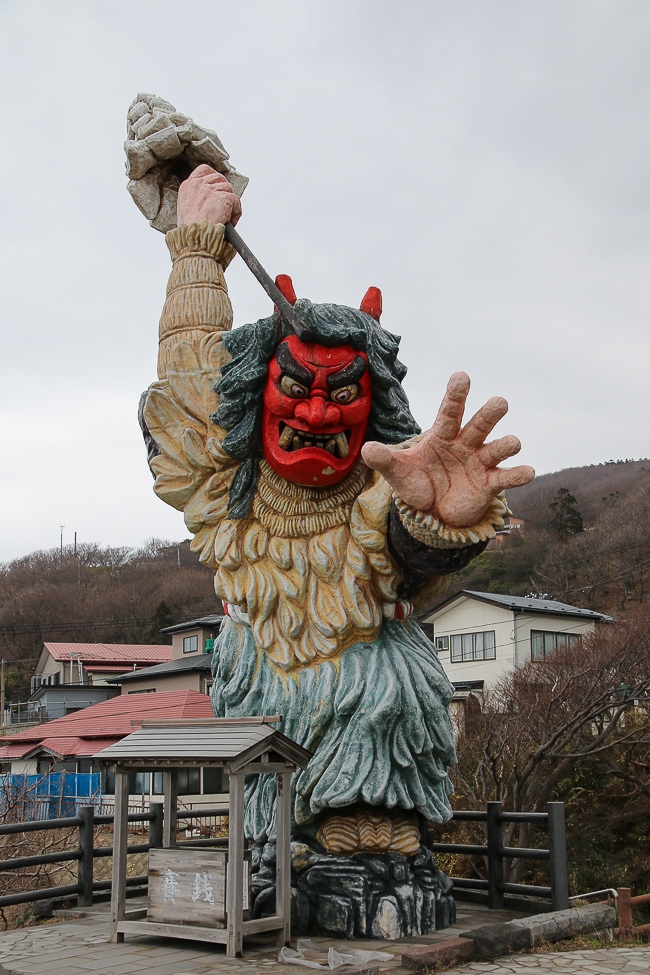
| previous post |
| next post |